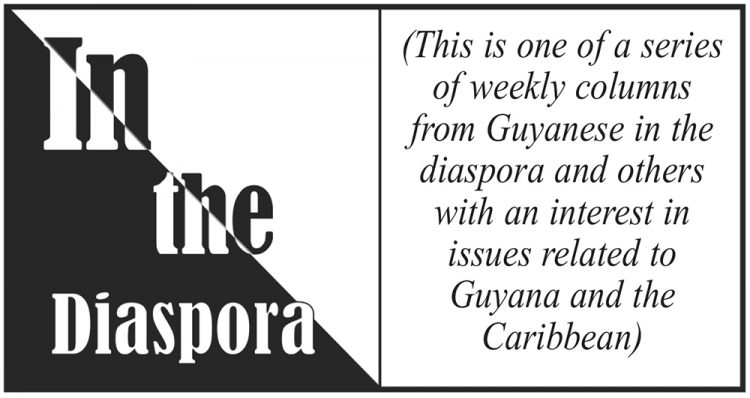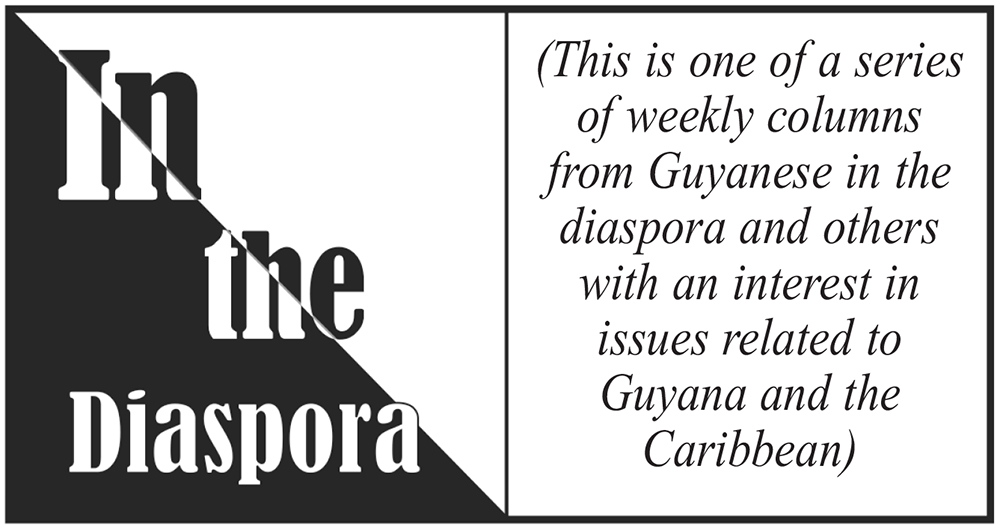By Mureen Aguilar, Medino Felician Abraham and Joel Thompson
Mureen Aguilar is the head teacher of Maruranau nursery, a pilot school for the Quality Bilingual Education programme (QBEP). She has 25 years teaching experience at nursery level and possesses a degree in Education (Administration) from the University of Guyana. Miss Aguilar is also a Nursery Field Officer (NFO) for the South Rupununi.
Medino Felician Abraham SJ lives and works in Aishalton, South Rupununi, and holds a degree in Pedagogy from Unisinos Jesuit University, and an MSc in Society and Frontiers from the Federal University Roraima, Brazil.
Joel Thompson SJ serves as the Assistant Parish Priest of 14 communities in the South Rupununi and as the team leader of the Intercultural Bilingual Education Organization. He holds an MSc in Environment and Development from the London School of Economics and Political Science, graduate degrees in Theology and Philosophy, and a degree in Electrical Engineering.
“It is better to light a candle than curse the darkness,” goes a proverb often attributed to Confucius. In this column, rather than lamenting the well-known shortcomings of education in Guyana’s hinterland, we offer some helpful insights from a small community-based Intercultural Bilingual Initiative for indigenous students in the South Rupununi known as the Quality Bilingual Education Programme (QBEP). The QBEP celebrates its 5th anniversary this month and is a collaborative effort between the Ministry of Education, the communities of the South Rupununi, and the Jesuits who have been serving the communities for over 100 years.
Emergence
Picking up from earlier efforts by Wapichan people to revitalize their language and to promote literacy, these set the ground for the development of the current education programme in South Rupununi. Between 2009-2011, the Jesuits serving in the Rupununi facilitated grassroots-level reflections to identify the needs of communities. From these community meetings, the desire for a quality and culturally relevant education emerged as a priority due to the sustained academic underperformance of children (particularly in grade 6) and the slow loss of indigenous languages and cultures in some communities. These grassroots reflections were part of what Paulo Freire called conscientization (conscientização), which means developing a critical awareness of one’s context through reflection and action.
A critical question emerged from the reflection process: “What is a quality education for indigenous communities?” Communities wanted their children to be proud of their cultural heritage and language, and to use their knowledge to make sense of their lives and the world around them. They also wanted their children to excel academically and to be confident in their indigenous identity.
Intercultural Bilingual Education
The idea to develop Intercultural Bilingual Education (IBE) locally in the South Rupununi was proposed after learning about IBE initiatives in Latin America, which, like Guyana, has indigenous communities working to affirm their cultural identity.
Bilingual education for indigenous peoples was first introduced in the 1930s by teachers working with indigenous peoples in Ecuador, Mexico, and Peru. It was initially viewed as an instrument of assimilation, and most governments in Latin America implemented early-transition strategies so that indigenous children could transition to the dominant language faster.
However, as indigenous peoples began to more forcefully contest assimilation programmes in the late 1970s and early 1980s, a shift from transition programmes to maintenance and development models occurred. This marked a change from top-down policies on indigenous education to more grassroots approaches, which led to the active participation of indigenous groups in the direction, design, and evaluation of language programmes.
These educational proposals incorporated indigenous languages and cultures into the curriculum. This allowed students to learn using their mother tongue while gradually acquiring proficiency in the designated national language (e.g., Spanish). These initial IBE programmes sought to respond to the educational disparities indigenous communities face and promote cultural preservation and identity. Despite ongoing debate about these programmes, they soon became recognized as a solution to the twin problems of cultural preservation and weak academic performance.
Intercultural Bilingual Education is not focused solely on language but places an equal or greater emphasis on indigenous peoples’ cultural practices, knowledge, and worldviews. These aspects are then included in the delivery and design of the curriculum. This departs from older bilingual education models, which saw indigenous languages as a way of improving literacy in the national language rather than as having value in themselves.
The QBEP emphasizes the importance of the mother tongue of children (Wapichan in the South Rupununi). It does not view it as a mere vehicle towards the acquisition of English. Beginning in the mother tongue is consistent with the golden rule of education, of moving from the known to the unknown. The QBEP believes that in keeping with that rule, children will be better able to grasp concepts, value their own culture and language, grow in self-confidence and self-esteem, and develop a love for school if their mother tongue is used both at school and home. Education with dignity.
An intercultural approach encourages students to embrace and share their cultural heritage while appreciating, learning about, and respecting the cultures of others. Given Guyana’s multicultural context, an approach to intercultural learning is necessary for everyone, indigenous or not. Throughout history, it is assumed that indigenous peoples had to learn from the non-indigenous while the opposite rarely happens. During the process of conscientization in the Rupununi, many indigenous communities acknowledged that they have a depth of knowledge that can be shared with the world, particularly in ecology.
Intercultural Bilingual Education in the South Rupununi
In July 2018, a Memorandum of Understanding between the Ministry of Education (MoE) and the Intercultural Bilingual Education Organization (IBEO) was signed to allow a two-year pilot of the programme in nursery schools in Maruranau, Sawariwau, and Karaudarnau. Despite the difficulties caused by the pandemic, the programme has continued, and due to the positive feedback, the MoE has decided to expand the programme to additional South Rupununi nursery schools shortly. The QBEP enters the primary level at Grade 1 this month and hopes to enter Grade 2 in 2024. What have been the main insights and successes of the programme? We elaborate on three below.
Community Participation
The first insight has been recognizing the importance of involving the community in the direction, design, implementation, materials production, and evaluation of the education process and curriculum. The community should participate in all aspects of the programme for it to be a genuinely grassroots movement. Meaningful participation is essential for ensuring that the content of the curriculum and the teaching materials are relevant to the community.
The community recognized that an essential part of the education process that was missing was their involvement. They felt that their knowledge and wisdom would strengthen their children’s indigenous identity and connect them more closely to them. Communities also recognized that the education model being presented to them, and which needed challenging, was what Freire called the “banking” model of education.
In this model of education, education becomes an act of depositing knowledge, and students are the depositories while the teacher is the sole depositor. As the sole source of knowledge, the teacher makes deposits, and the students patiently receive, memorize, and repeat what is taught. This model contrasts with indigenous ways of knowledge transmission, which tend to be communal and inquiry-based. So, for instance, children learn to farm and make cassava bread, not by being told what to do but by being taken to the farm and immersed in the activity from a young age.
Through the programme, parents have become more involved in their children’s education and assist teachers with creating classroom learning materials. This increased involvement has fostered a love for school and reading in students. Community members bring materials such as seeds, ité baskets, and animal pelts from their local environment for teachers to use as learning materials. Grandparents have also been invited to the classroom to share their traditional knowledge. Stories, songs, teaching aids, and illustrations for the programme are all done by teams from the three communities. Parental and communal participation in IBE initiatives fosters intergenerational solidarity and strengthens the community.
Inquiry-Based Learning
The second insight is that pedagogy is as essential as a culturally relevant curriculum. It is not just what is presented but how it is presented. Children’s enthusiasm, reflective capabilities, and confidence increase when an inquiry-based approach is used. Inquiry-based learning places the child, not the teacher, at the centre of the learning process.
It acknowledges that children already have quite a bit of knowledge and have been observing the world since birth. The approach encourages them to explore the world by being asked and asking questions about the things they observe. Teachers in the programme have recognized that an inquiry-based approach combined with using the child’s mother tongue elicits more interaction and participation in children. For example, walking outdoors to identify colours in nature, particularly fruits, is far more exciting and delicious than identifying colours in the classroom!
Reflective Teaching
Finally, the most important lesson learne d is that teachers and reflective teaching are vital to any educational initiative. Teachers’ confidence level in pedagogy, culture, and speaking an indigenous language helps learners advance. The programme has seen the benefit of creating a space where teachers can regularly reflect on their experience of being IBE facilitators. Reflecting on attitudes to teaching, home and learning environment, and classroom practice builds confidence and rapport among teachers. QBEP’s reflection process allows teachers to consider the broader context outside the classroom and how it affects learning. Factors such as whether or not children have access to books at home and are well-fed help teachers plan their lessons.
d is that teachers and reflective teaching are vital to any educational initiative. Teachers’ confidence level in pedagogy, culture, and speaking an indigenous language helps learners advance. The programme has seen the benefit of creating a space where teachers can regularly reflect on their experience of being IBE facilitators. Reflecting on attitudes to teaching, home and learning environment, and classroom practice builds confidence and rapport among teachers. QBEP’s reflection process allows teachers to consider the broader context outside the classroom and how it affects learning. Factors such as whether or not children have access to books at home and are well-fed help teachers plan their lessons.
In essence, intercultural bilingual education responds to the need for inclusive and culturally relevant educational practices catering to diverse linguistic and cultural backgrounds. It provides students with a strong foundation in their native language and culture while equipping them with the skills to interact and thrive in their communities and broader society.

